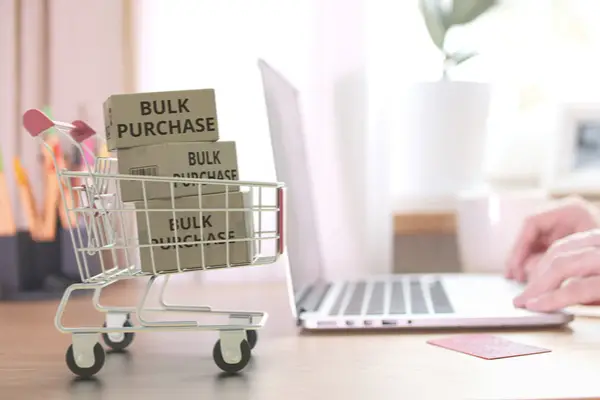There are various steps to become a liquidation broker. Many individuals are confused about what a liquidation broker is, how to find a broker and what they do. Liquidation brokers provide lost revenue to businesses and companies looking to move inventory. In fact, these brokers will purchase defunct, rejected, excess or overstocked items. Then, the best broker will provide expertise to small and large resellers to capitalize on exchanging name brand items purchased for pennies on the dollar. As an aspiring liquidation broker, there are various factors to consider in the reseller industry. Read on to discover how to become a liquidation broker.
How To Become A Liquidation Broker
Choose Between Liquidation And Wholesale
First, to become a liquidator, choose between wholesale and liquidation inventory. While these two sales options are similar, there are several key differences that can affect your position. Liquidation is the buying of excessive or obsolete goods from an organization and reselling them for a profit. Liquidation opportunities are on the rise as many retailers are launching B2B online auctions to sell their merchandise. As a result, it is easier than ever to obtain inventory. On the other hand, wholesale consists of selling goods and merchandise to online businesses, resellers or large corporations. Typically, wholesale prices are fixed and the product quantity varies substantially. Certainly, to become a liquidation broker, decide between liquidation and wholesale opportunities.
Determine A Liquidation Business Model
Secondly, you need to determine a business model to become a liquidation broker. Establish a business model and create a pricing structure to generate income. Choose between making commission or implementing product markups. With commission, brokers earn profits from the “bank-end” of sales or the merchandise owner. In fact, the percentage earned is decided before you begin to sell any type of inventory. After selling the merchandise or inventory, your responsibilities are complete and you will be paid when the sale is final. Meanwhile, product markup consists of adding a flat rate to the merchandise you sell. For example, when you find a reseller or buyer, you charge the price of the product plus a markup fee. You get to keep the markup while the balance is sent to your warehousing seller who then ships the merchandise to your customer. Definitely determine a business model to become a liquidation broker.
Find Liquidation Reseller Sources
The next step in becoming a liquidation broker is finding reseller sources. First, obtain a resale certificate to avoid paying taxes on items which will be resold. In fact, most reputable liquidation companies require this form to verify you are a legitimate company and broker. Then, determine which methods and retailers to purchase inventory from. Consider tracking down a liquidation wholesaler or an auction site. Of course, look into major retailers including Target, Home Depot and Walmart who have private online marketplaces. Additionally, you can find Amazon liquidation opportunities too. Research Amazon business vs prime to access overstocked items, liquidation inventory or customer returned merchandise. Surely, to become a liquidation broker, you need to find reseller sources.
Decide What To Sell
Furthermore, as you continue your journey on becoming a liquidation broker, you need to decide what to sell. Take your knowledge base, expertise, experience and skills into consideration when selecting an inventory. In fact, it is easier to sell a product you know, believe in and are interested in. More so, there is a market for almost any type of product, item or merchandise. Of course, consider market conditions when choosing inventory. Some markets are extremely competitive and can be over saturated. As a result, if you are an amateur broker, choose a niche market to gain knowledge, qualifications and training. Certainly, to become a liquidation broker, you need to decide what to sell.
Start Purchasing Items
The final step in becoming a liquidation broker is purchasing items. Typically, you can find more items than the closing company’s merchandise and products. In fact, you might be able to purchase desk chairs, forklifts or even security cameras. Usually, sales of liquidated businesses last for multiple days or weeks. In the beginning, most items will be slightly discounted. Of course, as time goes on, discounts increase and products can be sold for as much as 90% off. However, by the end of the sale, there may not be much merchandise left. When purchasing items, remember that all sales are final. Plus, in most cases, you will have to pay immediately. Finally, you can start purchasing items as a liquidation broker.
How To Start A Liquidation Broker Business
Liquidation brokers purchase merchandise from wholesalers and then resell the products at a profitable cost. As an entrepreneur interested in starting up your own company, you could maintain a positive cash flow by launching a liquidation broker business. However, you need to learn how to run such a business properly in order to earn a profit. After all, figuring out which items to purchase is difficult enough. On top of that, you need to determine where to purchase them from and how much to resell them for. Read this post to learn how to start a liquidation broker business.
Find Liquidation Wholesalers
Begin starting a liquidation broker business by finding liquidation wholesalers. There are numerous wholesalers available in various industries. After all, entrepreneurs startup wholesale distributor businesses frequently. With that being said, finding a wholesaler is not an issue. The struggle lies with finding a wholesaler that is reputable. Use your online resources to determine which wholesalers are worth your money and which will not earn you a profit. Once you find a wholesaler’s contact information, reach out to them. Talk to them on the phone or meet with them in person to gain a better understanding of who they are and what they can offer your startup.
Evaluate Your Financing Options
After you find a reputable wholesaler for your liquidation broker business, evaluate your financing options. As with any startup, you need to set a realistic budget before making any deals or purchasing any assets. Consider different loan options if you do not have the financial means to kick-start your company on your own. You can take out short term loans that allow you to pay in smaller chunks. Some entrepreneurs who are already in debt opt for taking out bigger loans. They pay them off in longer terms. Determine which is right for you based on the budget you created for your liquidation broker startup.
Lease A Warehouse
Once you obtain the funding you need for your liquidation broker business, lease a warehouse. Be wary of this step. You will likely spend a large portion of your budget on warehouse payments. However, it is necessary. You need a warehouse that can fit all of your goods in it. On top of size, you need to pay attention to the quality of the establishment as well. Potential buyers will not be impressed by a dirty facility. Moreover, they will avoid purchasing your products altogether if it is not well kept. Find a warehouse to lease for your liquidation broker business that is both large enough and maintained enough.
Diversify Your Products
Furthermore, diversify the products you plan to resell in your liquidation broker business. Prospective buyers will be more impressed by your company if you offer various types of merchandise. However, you should begin with products in a single category. Ensure that they are in high demand. That way, you can practice your selling skills and start earning a profit before spending more capital. Consider Ebay top selling products and in-demand items on other sites. Once you achieve a few short term goals selling products in one category, start to diversify your merchandise. This upgrade could transition your company from startup to full-blown liquidation broker business.
Conduct Market Research
In addition to the above steps for starting a liquidation broker business, you need to conduct market research. This is the only way for you to stand out from your competition. If your competitors put more effort into standing out than you do, you will never become a leader in the industry. Pay close attention to other, more successful liquidation brokers who sell similar products as you. Look into their pricing structure and their marketing strategies. Alter your tactics accordingly to out-do them and earn more customers. As a result, you will succeed in starting up a liquidation broker business.
If you are interested in purchasing products to resell them at a reasonable yet profitable price, you should consider launching a liquidation broker business. Kick-start it by finding liquidation wholesalers who are reputable. Set a budget for yourself and use it to determine the best financing option for your startup. Put a large portion of your budget into leasing a warehouse that is both large and well-maintained. Vary your products to buy and resell after you build up your skills. Finally, conduct market research on your competitors to upgrade your strategies. Use these methods to start a liquidation broker business and earn a large profit.
 Business First Family Business, Accounting, Finance, Investing, Marketing And Management
Business First Family Business, Accounting, Finance, Investing, Marketing And Management


